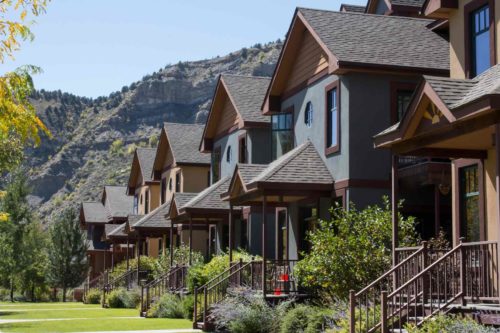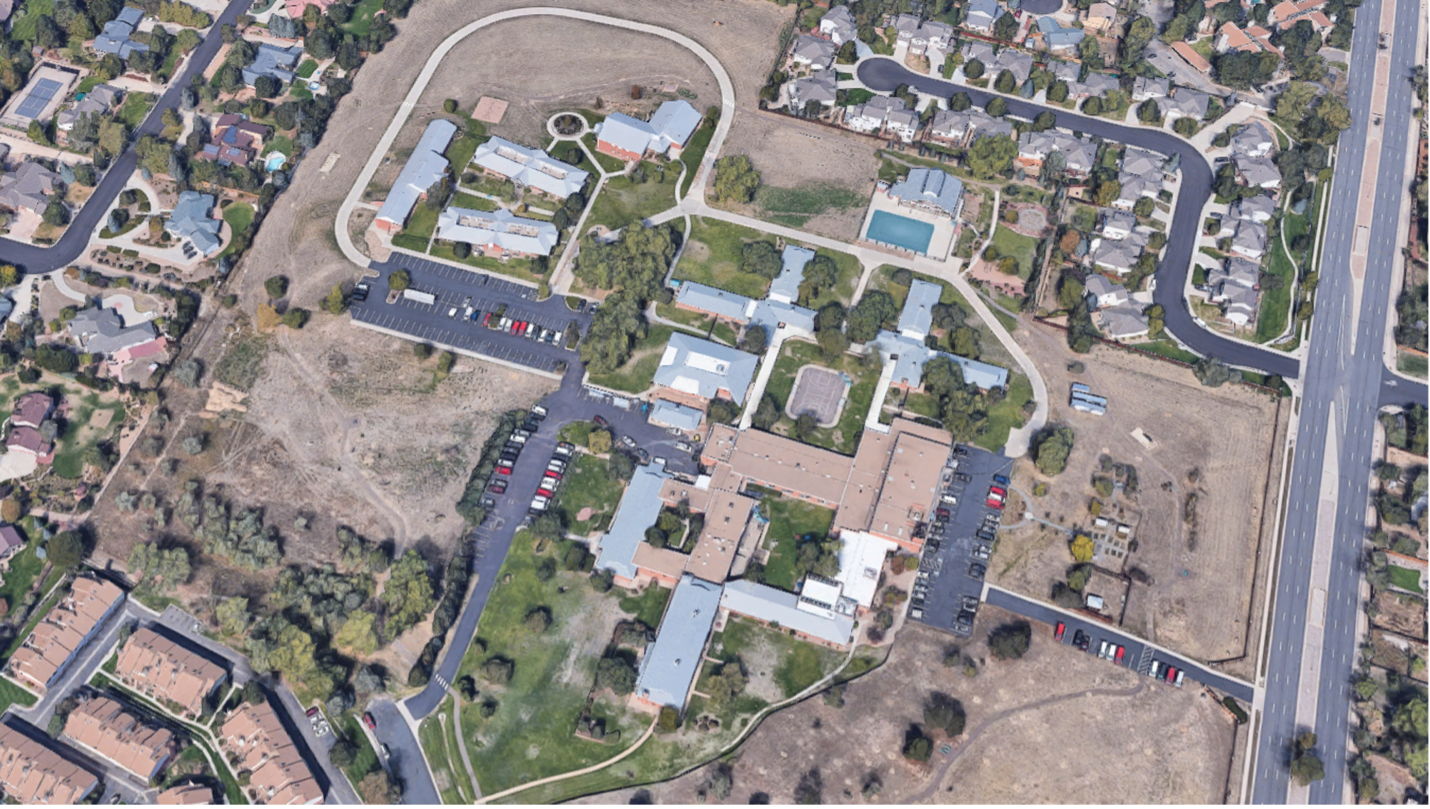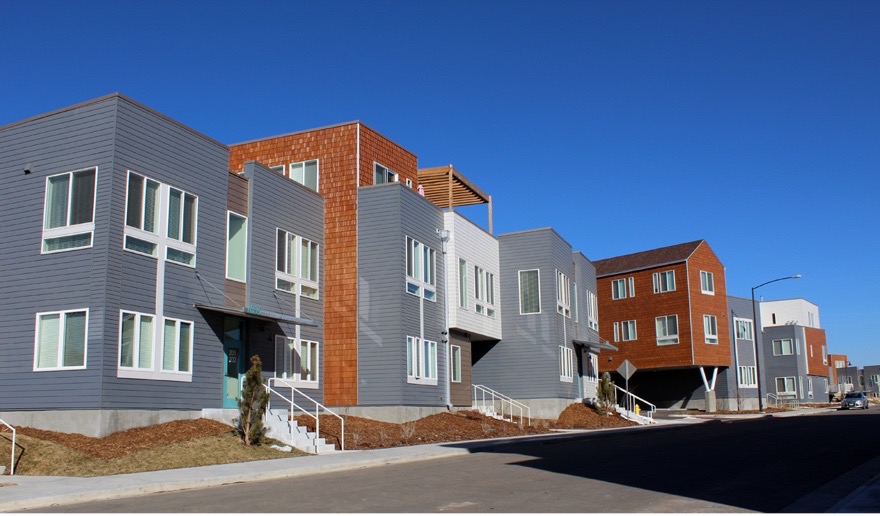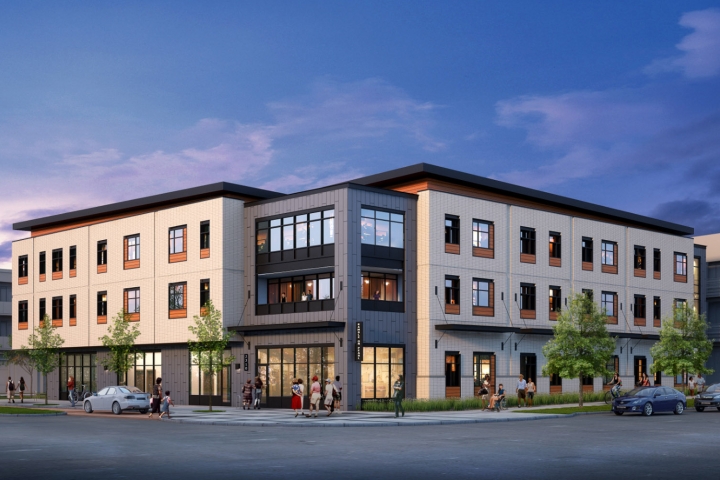
Colorado Developers Lead the Way on Affordable, All-Electric Housing
Several Colorado developers are forgoing fossil fuels and building all-electric, affordable housing units. These developers view all-electric as an attractive option for both new developments and retrofits due to the positive climate impact and cost saving potential, demonstrating the feasibility of the technology even in a colder climate.
All-electric housing can help improve indoor air quality and lower asthma rates by eliminating gas appliances, as well as increase equity by giving tenants access to clean, efficient technologies at low costs. As one developer told RMI, the beauty of all-electric is in “its simplicity”—it is easy to maintain with high-quality technology that can last longer than gas alternatives.
Property developments that take place either on new plots of land or older properties often lack gas connections (requiring new infrastructure investments) or have inherited outdated mechanical systems that have missed critical upgrade cycles. Thus, electrification emerges as an attractive option given its ease of installation and future payoffs in the form of efficiency gains and energy savings.
The RMI team spoke with Aaron Martinez, from the Urban Land Conservancy, and Ian Swallow, representing both Boulder County Housing Authority and Boulder Housing Partners, about these zero-emissions affordable housing projects. The three projects highlighted below show how these Colorado developers are paving the way for future affordable housing that is modern, healthy, and climate-friendly.
Oxford Vista
In 2018, the Urban Land Conservancy (ULC) acquired the 31-acre, 150,000-square foot Oxford Vista campus in Aurora, Colorado. The compound was built in 1968 as a single-story school, and ULC aimed to preserve the existing property and convert it into affordable student housing for over 250 tenants attending the Aurora Campus.
To ensure affordability, resilience, and fulfill its climate goals, the developer chose to retrofit the campus without fossil fuels. Due to the age of the building, the mechanical systems were still in their original condition and had missed several upgrade cycles, requiring new wiring and gas line installations. Although there was a slightly higher upfront cost with the all-electric system in weighing the cost to re-install gas lines compared to going all-electric, it proved to be a worthwhile investment. There are fewer maintenance requirements with more efficient heating and cooling, plus lower monthly utility bills for the tenant.
The Oxford Vista project provided an opportunity to adopt cutting-edge heating and cooling systems like a geothermal variable refrigerant volume (VRV) system, 440 kW solar panel array, energy efficient windows, and LED Lighting. As a result, the campus uses almost 92 percent less electricity than the national average per square foot. Ground source heat pumps have replaced gas connections and enabled an estimated $20,000 in gas savings, $40,000 in electricity savings, and $15,000 in maintenance savings overall. The modern, efficient systems resulted in lower utility bills, enabling more funding to be used for direct service programs.
Kestrel
In 2013, Boulder County purchased the 13-acre Kestrel property located in Louisville, Colorado. The county used the development as an opportunity to transform this once dilapidated property into a “100-year, forward-thinking design” that would ensure not only sustainability, but longevity. Kestrel offers affordable rental housing with 71 apartments for seniors and 129 townhomes for families of all ages. These homes are available to those whose income does not exceed 60% of Boulder County’s area median income and rents are offered below market rates.
Because the land was previously undeveloped, the Boulder County Housing Authority opted for a high efficiency geothermal heating and cooling system, along with mini-split heat pumps throughout the complex. The upfront costs of installing the geothermal system were balanced by the savings from avoiding gas infrastructure throughout the entire property, and result in reduced energy costs for the housing authority, which covers tenant utility bills at Kestrel.
30 Pearl Street
Boulder Housing Partners (BHP) created the all-electric 30 Pearl Street complex in line with Boulder’s goals to develop more affordable housing. The development occupies the site of an old auto dealership and features 120 units serving individuals and families earning 30 to 60 percent of the area median income. These homes operate without fossil fuels. Constructing all-electric housing is in line with BHP’s mission of sustainability and simplifies construction and operation of the housing complex by avoiding gas lines and gas HVAC equipment, along with the maintenance and safety concerns associated with it.
The all-electric design minimized venting requirements from the buildings, boosting efficiency and helping to lower energy bills. A second developer is constructing market rate housing on the same site, also building without gas. This property is located near Boulder Junction, a major regional transit hub, creating easy and sustainable access to transit throughout the Denver metro area.
* * *
Developers of affordable housing are pursuing all-electric designs more frequently because of the climate impact, simplicity and avoided costs of building without gas, and numerous other benefits to residents. BHP indicated they don’t expect to build a new property with fossil fuels ever again. As communities continue to increase ambition to combat climate change, the importance of eliminating fossil fuels will become more apparent. Housing authorities and governments can prioritize all-electric affordable housing to ensure that low- and moderate-income families are among the first to benefit from the improved air quality and comfort these systems provide compared to gas.
In Colorado, the legislature has set firm goals for reducing greenhouse gas emissions. And as the electricity mix becomes cleaner, more policies are being debated in the state house to cut emissions from the building sector, with a focus on phasing out natural gas. Affordable housing developers are leading by example with properties like Oxford Vista, Kestrel, and 30Pearl.
Cities like Denver, which recently announced its Net Zero Implementation Plan, are also recognizing the need for all-electric buildings to support their ambitious climate targets and aiming to support these types of developments with enhanced incentives. As the cost of electric appliances continue to come down and awareness of benefits rises, we expect more and more developers to choose to build all-electric, affordable housing—for health, for the climate, for simplicity, and for the raw cost advantage.


